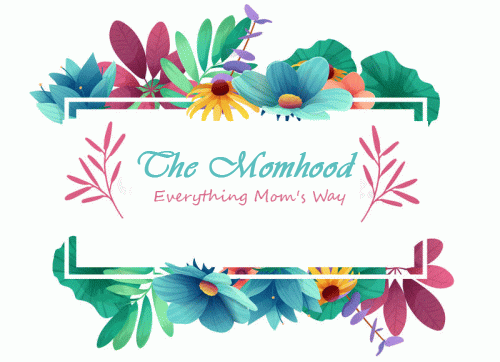If we ask Grandma and Grandpa to reflect on their old school days, we might find their memories of the historical facts have merged with feelings of nostalgia. Many of our elderly loved ones went to school during social and political crises and faced discrimination and gender inequality.
Although higher education was available 80 to 100 years ago, for many of our ancestors, continuing school beyond year 7 was not an option. If you are wondering what education used to be like, here is a look back at schools from the past:
Historical and Social Background
Over the past 100 years, there have been progressively changing attitudes toward the value of education. Prior to the late 19th century, regular participation in school life was not valued.
Although secondary schooling was available, this was usually a privilege for the affluent minority. The societal attitude was that children would be required to leave school and go to work at an early age. Young women were often faced with a barrage of negative opinions and discrimination if they wished to further their education. After all, women were traditionally expected to marry and take care of the home.
The years between 1880 -1900 saw positive changes to the perceived value of education. With the implementation of free, secular and compulsory schooling in Australia, achieving literacy for all children became the goal. To this day Australian societal norms still dictate that each child has the right to education. Supported by legislation, government funding, trained teachers and parental expectations, students are now encouraged to meet their learning potential.
Even though the rate of attendance was increasing, political, economic and societal events during the 20th century were very disruptive and presented challenges for families, teachers and schools. During the crisis times of the World Wars and the Depression, education was overshadowed by deprivation and hard work. Children still went to school, but this was not a priority. Families worked with what life dealt them and found meaning in the hardships often referring to these dark years as “character building”.
Along with changing attitudes to the value of education, we have made great strides in technology and teacher training over the years. Our education system has since been prioritised and protected by the government, hard working educators, and parents who have developed strategies for remote online learning.
The School Environment
School life in historical times was often feared and fraught with abuse, bullying and discrimination. For many, school days began with trepidation and night time brought its school based nightmares. Many children had to work hard before and after school doing chores so they were often exhausted during class time.
Teachers were allowed to humiliate and traumatise children in the classroom until the late 1950s, when new concepts such as classroom etiquette evolved. Of course, not all teachers involved themselves in such behaviour but this was considered to be one appropriate form of discipline.
Children who did not comply with the rules were regularly sent to the principal. Discipline could take the form of caning on the palm of the hands or the back of the knee. Teachers were allowed to administer their own brand of punishment as they saw fit.
The banning of corporal punishment in schools in the 1990s saw the end of caning, physical punishment, smacking, belting, pulling hair, and throwing blackboard dusters as a means of school discipline. The current attitude is that corporal punishment teaches fear and creates anger and resentment rather than teaching respect for authority.
Our current school system recognises that the school environment can have a profound and long lasting effect on a child’s emotional and psychological health. Schools have anti bullying strategies and teachers are expected to manage difficult behaviours without shaming or degrading students.
Teacher Gender Imbalance
From 1889 until 1966, female teachers were barred from marrying, and all those over the age of 50 were retrenched in order to leave jobs available for men. Until 1973, although female teachers were excellent at their profession the teaching position was seen as subsidiary to male teachers.
The primary female role was regarded as housewife and mother, so women did not receive equal pay. These days, young women can get a high quality education at Perth’s leading boarding school that prepares them for a lifetime of success.
Chalk Boards, Nibs and Ink Wells
We have come a long way from the chalkboard and inkwells on desks. The pen holder and nib has been replaced by computers, whiteboards and smart boards. Our elderly loved ones tell stories of using blotting paper to mop up the ink spills, developing the fine arts of handwriting and checking the dictionary to spell a word.
Information is now available for students on the internet but until recently, the only avenue for gaining information at school was the text books, the library or the teacher. Technology has created new opportunities for teaching and learning.
Milk for School Children
From 1950 until 1980 a free school milk program was introduced by the Federal Government in Australia. Originally the milk came in small bottles and was left in the sun for children to drink at recess time.
It was not flavoured milk, but there was the option to buy strawberry or chocolate straws from the Tuck shop.
Morning Salute and God Save The Queen
On Mondays, most public schools began the week with a salute to the flag and singing of “God Save the Queen”. Standing at attention, children would recite ” I am an Australian. I love my country. I salute her flag. I honour her Queen. I promise to obey her laws”.
In 1984 the national anthem was changed to Advance Australia Fair so this ritual was abandoned.
Changing Communication Styles
Until the late 1960s, education was based on a traditional teacher centred approach. Children sat in rows facing the teacher who stood near a large blackboard. This type of teaching was generally authoritarian with children expected to maintain classroom silence at all costs.
Teachers were strongly disapproving of any chatting or whispering in the classroom.
Gradually this design has altered to a more interactive approach with teachers encouraging student participation and involvement. It is believed that this type of learning experience leads to critical thinking and problem solving skills.
School life has changed significantly over the years, and education is more important than ever in current times!


